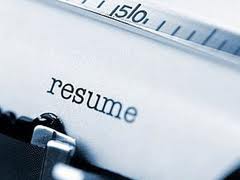
Employers are inundated with resumes and it often takes weeks, or even months, to sort through them all to identify the candidates they deem qualified. Despite the administrative headaches and delays caused by processing resumes, companies rely heavily on the resumes they receive to screen for potential candidates.
Given the choice of two candidates of equal ability, hiring managers will always prefer to interview the one with the most artfully constructed and attractive resume. Many of the best candidates have the best resumes and sometimes, highly qualified candidates manage to surface through word-of-mouth referral.

Why Have A Dynamic Resume?
Unless you can afford to rely on your "reputation" or on the recommendation of the barracuda recruiter, you will need more than the right qualifications to get the job you want. In today's competitive employment market your resume has to stand out in order to get the attention of the decision maker and create a strong impression. Later on, when you meet the prospective employer face to face, a strong resume will act as a valuable tool during the interviewing process.
What To Put in A Resume?
In addition to providing a factual representation of your background, your resume serves as an advertisement of your availability. Remember, your resume is written for the employer, not for you. It's main purpose is to answer the following questions: How do you present yourself to others? What have you done in the past? What are you likely to accomplish in the future?
Ten Guide Lines to Constructing A Resume
Know the purpose of your resume. A resume will get you the interview and the interview will get you the job. A resume should be key points about you, not long and boring.
No “generic” resumes. Even though each potential job is different you still need to treat each potential employer the same. Design your resume for the job you are applying for and use job titles and skill headings that relate to the position.
Clarity of dates and place. Document your work history accurately. Do not leave the reader guessing where you were employed or for how long. If you have had overlapping jobs, find a way to pull them apart on paper or eliminate mentioning one to avoid confusion. Do not go past 15 years of work experience.
Use “POWER” words. Note how many accounts you worked on or how many people you managed. Be as detailed as possible because details stand out. Use power words that match the level of the position you want. Do not exaggerate!
Proportion and Relevance. Give appropriate attention to jobs or educational credentials according to their length or importance to the reader. Prioritize your resume by importance, impressiveness, and relevance to the job you are applying for.
Use Bullet Points. Most employers do not have the time to read paragraphs about you. Save that for your interview. Use bullet points or short sentences to peak the potential employer’s interest.
Leave nothing to the imagination. Do not assume the resume reader knows what something means on your resume. (i.e. "M.M." is a Master of Music Degree)
Length. Fill up only a page or two. If you write more than two pages, it sends a signal that you can not organize your thoughts. If your content is strong you will not need more than that.
Spelling, grammar and punctuation. Create an error-free document which is representative of an educated person. If you are unsure, consult a professional writer or copy editor. At the very least, use spell-check and always proof read what you have written and then proofread it again!
Achievements instead of Responsibilities. Potential employers want to know what you can do for them, not what you were responsible for. Professional achievements will tell them what you can do for them based off of your successes. Anyone can have responsibilities, but it is candidates who take those responsibilities and turn them into successes that will get the interview.
Overall appearance and presentation. Use a professional e-mail address, not something like hotmama@partygirl.com. Select the proper visual format, type style, and stationary. Resume readers have become used to customary and predictable format. If you deviate too much, or your resume takes too much to effort to read, it will probably end up in the trash even if you have a terrific background.
*******************************************************
Resume writing can be tricky, especially if you have not done it before. We suggest you write several drafts and allow yourself the time to proofread for errors. Practice makes perfect! Contact one of our staffing coordinators if you need help with your resume.